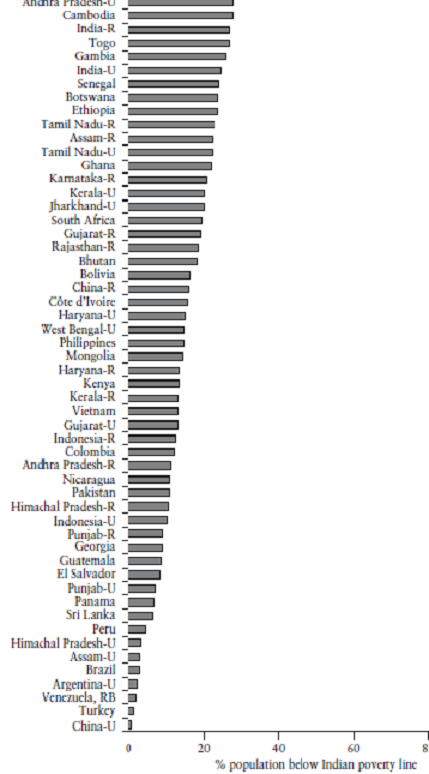Has Poverty Really Dropped in India?
Has Poverty Really Dropped in India? - NYTimes.com
Remember when the public was outraged at the idea that the poverty line should be 32 rupees, or 63 cents, a day in urban areas?
Weve now learned it should really be 29 rupees. And believe it or not, this is no sleight of hand to show a drop in poverty.
The Planning Commissions latest poverty estimates, released Monday evening, show a 7 percentage-point drop in Indias poor, the largest fall since the figure was first calculated in 1962.
Some critics say the Planning Commission has reduced an already controversially low poverty line even further, using the new thresholds to create the appearance of a large drop in absolute numbers.
The Global Post argued Tuesday that the Planning Commission, already under fire for setting a poverty line of 32 rupees per day for urban India and 26 rupees for rural India last year, lowered the bar a hefty 12 percent to 29 rupees and 22 rupees to fudge the stats.
The Financial Times said Tuesday that if the government continues along these lines, India will soon achieve something remarkable in the course of human history: by September of next year, it will be the first country on the planet to be completely free of poor people.
But are the goalposts actually moving?
Mihir Shah, a member of the Planning Commission, said no. The commission, he said, is using the same methodology it did when it last published poverty estimates in 2009, based on data from a nationwide survey in 2004-5. The poverty lines have been raised significantly, by nearly 50 percent, since then: In urban areas, the poverty line increased from 578.80 rupees, or $11.50, per capita per month to 859.60 rupees; and in rural areas it went from 446.70 rupees to 672.80 rupees.
The misunderstandings arise because in September 2011, the Planning Commission filed an affidavit with the Supreme Court in response to a case filed by activists. The affidavit pegged the provisional poverty line for urban and rural areas at 965 rupees and 781 rupees per capita per month, respectively.
However, the figures filed in the September affidavit were back of the envelope calculations and projected a poverty line for June 2011 based on the 2004-5 National Sample Survey data, according to Saumitra Chaudhuri, a member of the Planning Commission. In other words, the 32 rupees a day poverty line was simply a forecast based on old consumption patterns.
The figures released on Monday are based on 2009-10 N.S.S. data, which include actual consumption by households measured by the costs of food, rent and clothing, rather than estimates.
So in fact, only two official poverty lines exist for the period between 2004 and 2010 based on N.S.S. surveys. The 32 rupees a day was an estimate and should be disregarded when evaluating the poverty figures. For the purpose of comparison, the revised poverty line of 29 rupees a day for 2009-10 should be weighed against the line of 19 rupees a day in 2004-5 in urban areas.
Both poverty lines (based on data from 2004-5 and 2009-10) were calculated using the same methodology and were therefore comparable, Mr. Chaudhuri said.
Mr. Shah acknowledged that the poverty lines set by the commission did not constitute an adequate definition of poverty since they did not take into account malnutrition, sanitation, drinking water, housing and health. These poverty lines will not be used to determine entitlements under government programs, he said, and their only purpose was to provide a comparison of consumption expenditure levels over time and across states, he added.
Some say the furor over the poverty lines should be focused instead on the distinction between an ethical and an administrative poverty line.
Abhijit Banerjee, director of the Abdul Latif Jameel Poverty Action Lab at M.I.T., argues that we need two different poverty lines: an ethical poverty line to describe the standard we should aspire to, which could be 50 rupees or more, and an administrative poverty line, which tells us how to best target our limited resources.













